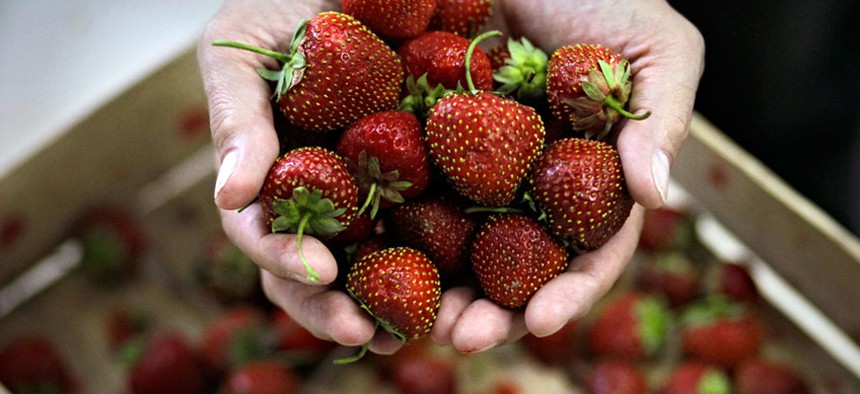Robotic Farm Workers Won’t Improve Food Prices or Labor Costs

Sergey Ponomarev/AP
A mixture of economics, technology and politics is making the push for shiny farm hands on wheels.
It’s summer in the northern hemisphere, and with it comes cool fresh salads, delicious ripe fruit and favorites like corn and other fresh veggies on the grill. But, looking down at your picnic plate, could you tell which produce may be soon picked by non-human hands? Makers of a new class of robotic farm equipment (and some farmers) may be hoping you can’t, or won’t care, as they usher in the next generation of Silicon-based farm workers to spray, manage and harvest our favorite crops.
Driving the thrust toward robotic farming is a mixture of economics, technology, and, in no small part, politics. At the same time we, as consumers, are demanding high quality produce at reasonable prices, a cloud is growing over the nation’s agricultural production. Proposed immigration legislation getting batted around Congress could make a huge dent in the substantially illegal workforce that both “big” and “small” agriculture rely on to pick many crops.
Workers of the world, unite
One government estimate places the size of the illegal workforce in agriculture at just under 50% between 2007 and 2009, or roughly 1.5 million workers, according to the National Center for Farmworker Health. Labor costs make up 42% of variable costs for fruit and vegetable production in the US, according to the US Department of Agriculture’s Economic Research Service (ERS). Withdrawing this low-cost source of maintenance, picking and packing labor, much of which is paid below minimum wage, could fuel rising commodity costs for farm-grown food at a point when the US consumer is still very sensitive to food price increases.
Add to this an already shrinking immigrant pool from which to draw, eroded by Mexico’s improving economy for one, and farmers are increasingly in need of new, predictable, and price-stable forms of farm labor—all of which, a shiny new worker on wheels is promised to provide.





